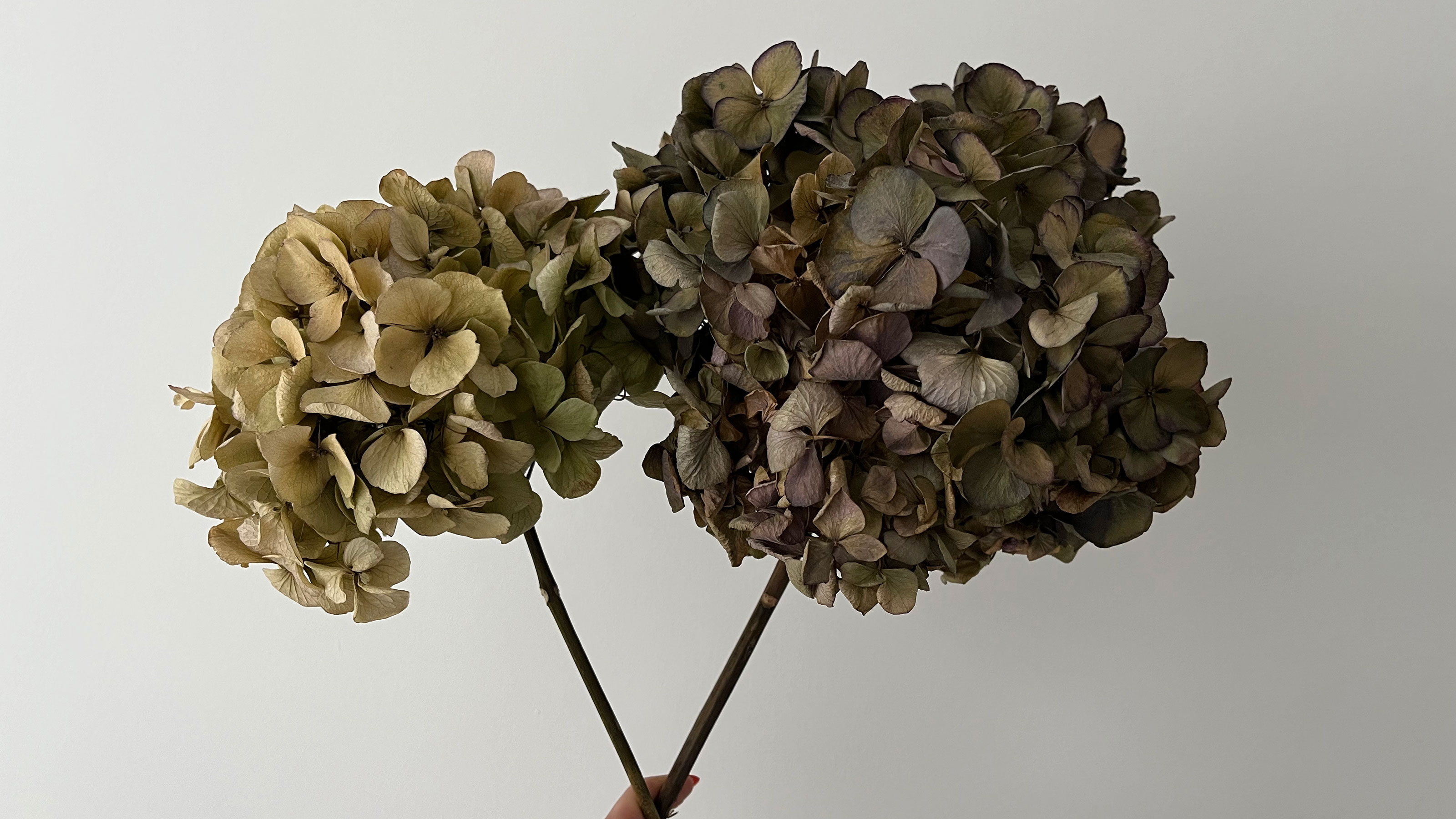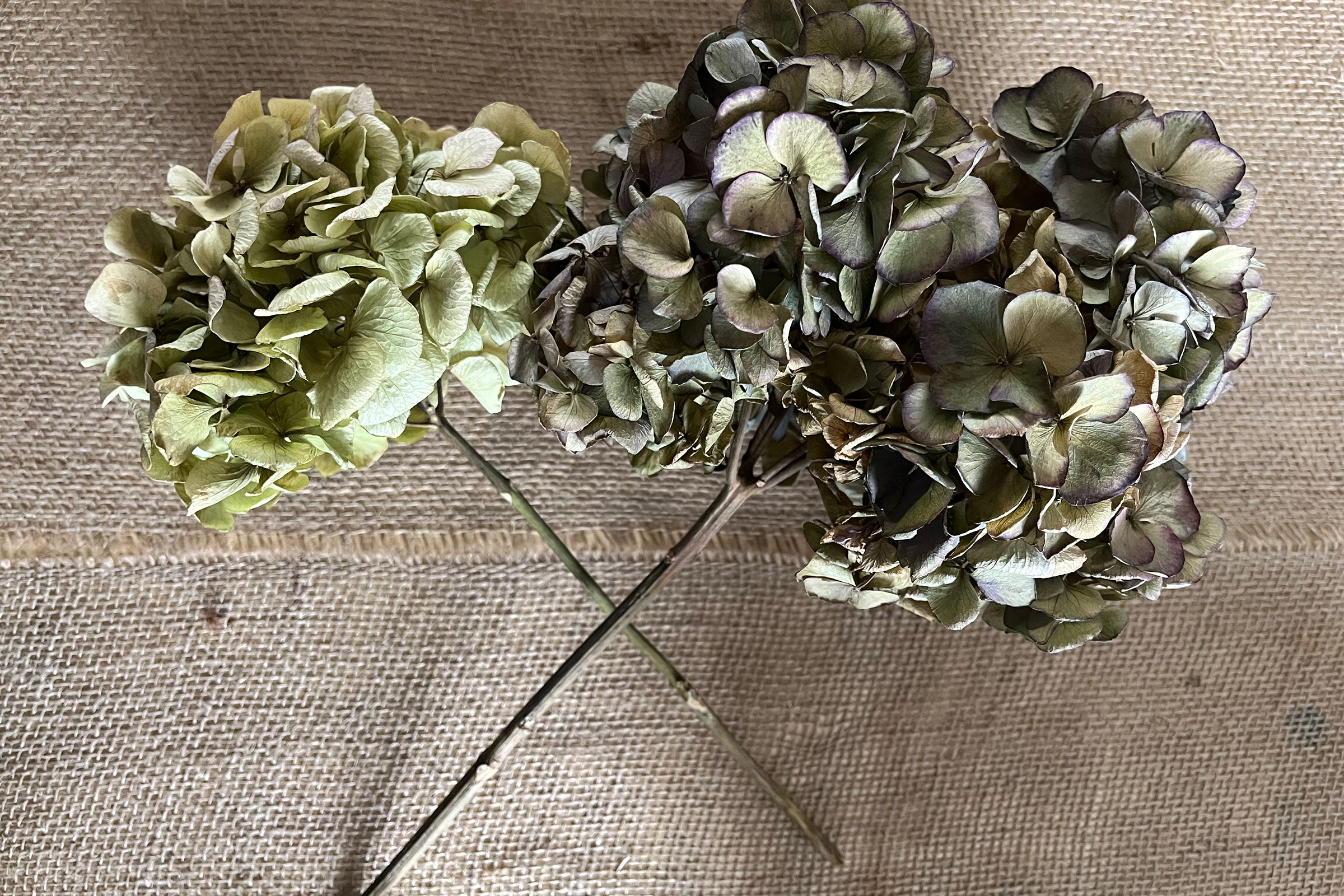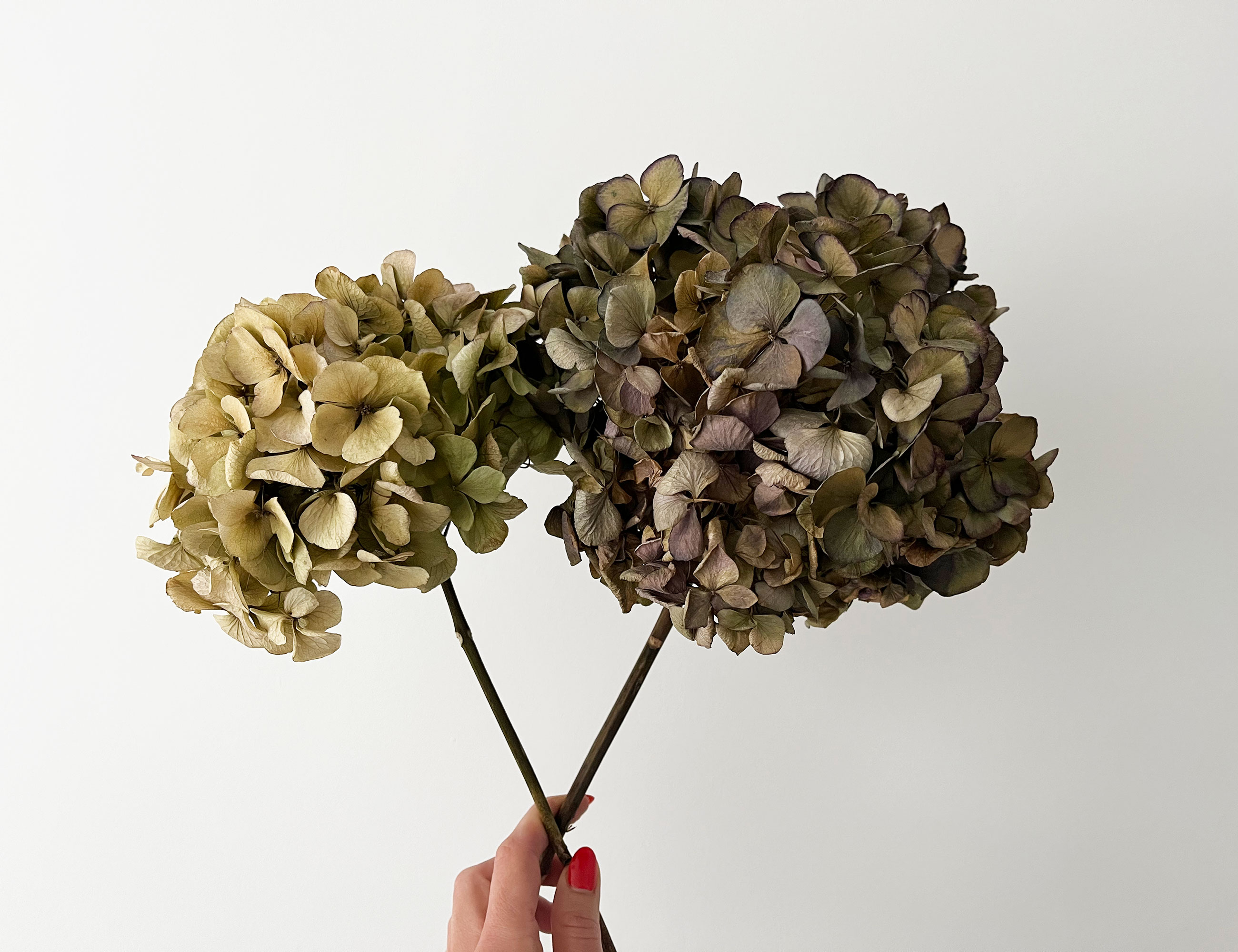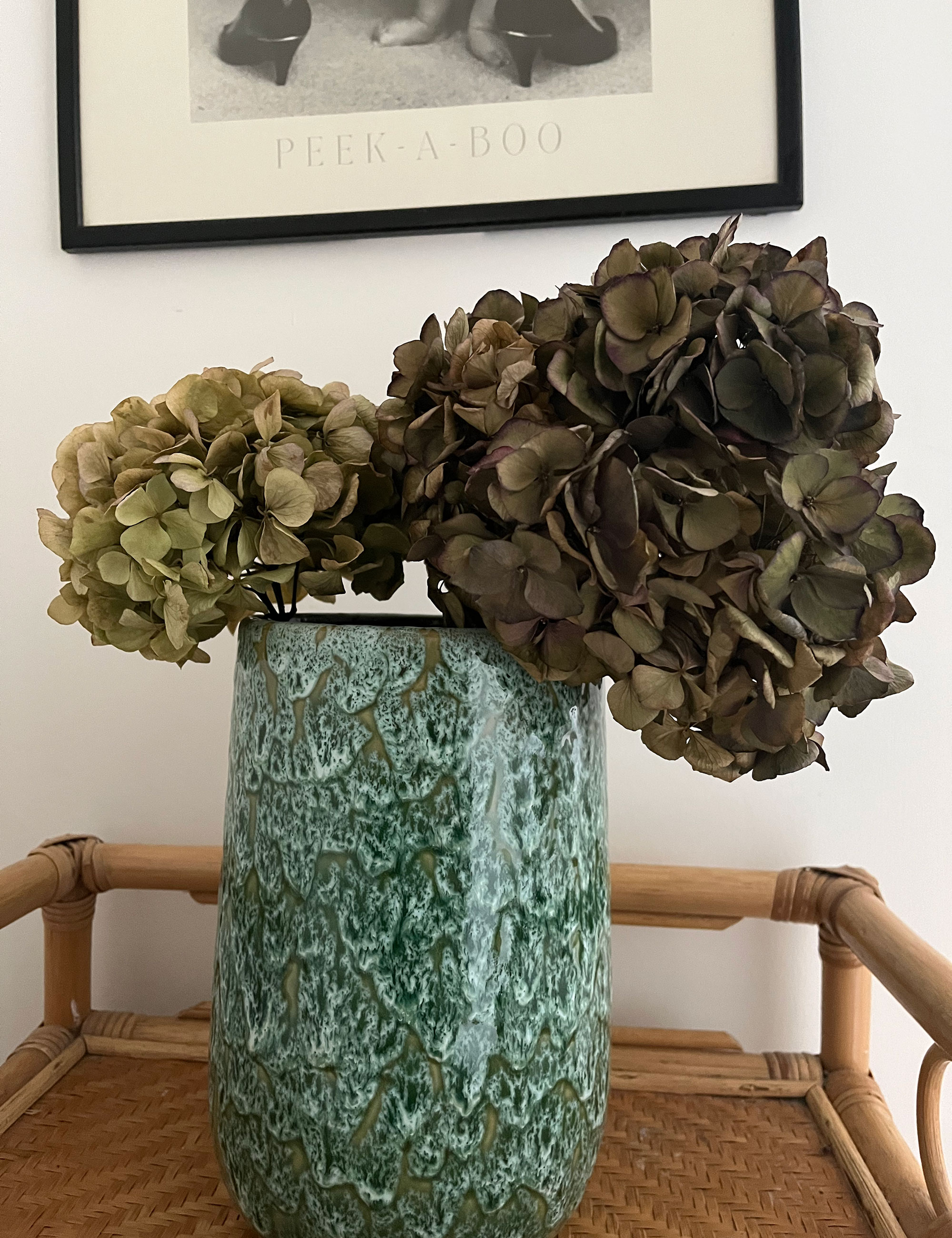

Sophie Warren-Smith
Hydrangeas are a sight of summer – their colorful blooms lining borders in shades of pink, blue, white and purple. Those in the right climates might be lucky enough to get a second flourish later in the season or come fall.
Drying flowers like hydrangeas is simple to do, pretty quick and very on-budget. Not to mention, dried hydrangea blooms need zero upkeep so they make great low-maintenance additions to a thriving indoor plant display.
What is the best way to dry hydrangeas?
If you've been deadheading hydrangeas throughout their growing season, and finding it hard to part with those lovely blooms, drying hydrangeas is the perfect way to keep these beautiful flowers present in your surroundings.
And while their color may become more muted, they add wonderful texture to your scheme.
There are a couple of methods for drying or preserving hydrangea flowers. One is a hydration method that will better preserve the flowers, the other more classic (and quicker) way works by forced dehydration. Additionally, you can use the more stringent method with silica gel.
Sophie-Warren Smith, a UK-based wedding florist @theprettiestposy usually dries hydrangeas freshly cut from the garden using them in stunning seasonal bouquets. She notes how it comes down to a little trial and error to find the best method for you and your type of bloom.
'I have done the leave in a vase whilst the water runs out and it did work. The reason this way works is because it allows them to dry out slowly as the water evaporates and preserves them better.'
Preparing to dry hydrangeas
Whichever of the three main drying methods you use, if you're using your own hydrangea flowers, it's important to cut at the right time and in the right place.
Warren-Smiths notes: 'There are two drying options that have good success rates, both involve cutting the hydrangea head once the mini flower buds in the middle have opened.' We've also listed a good option to dry and preserve blooms for better color.
As when pruning hydrangeas, you'll want to use your best secateurs – ensuring they are clean. I like Felco's Model 12 secateurs as they have good grip and are perfect for this kind of job. It's always wise to wear gardening gloves too, but you don't want anything too loose so try to pick up a comfort fit design.
If you grow your own hydrangeas, look to care well for yours in the first instance and then rather than cutting a freshly sprung flower, you actually want to let them dry off a little on the stem, until the petals become paper-like and the color will shift a little also.
A post shared by Camille M Welch (@cam.marie.welch)
A photo posted by on
If, like me, you bought your hydrangeas from a flower market, pick the most vibrant heads you can and you can let them age at home before you start the drying process.
In the same breath, you still want a flower that is full and with few defects as drying can often emphasize these. Make your cut just above a bud/node, leaving, quite a long stem from the base of the flower (12 to 20 inches) so that you have enough length to work with decor-wise once they are dried.
Once cut, remove any leaves and put your stems into a vase with a small amount of water before choosing how you want to proceed.
1. The hydration method
'The first option is to place the stem or stems in a vase with an inch of water, this is called the hydration method.' Shares Warren-Smith.
This is a slow method, so you want to keep one to two inches of the stems in water, leaving space between the flowers for good air circulation. Keep them in a dark, warm space like a cleaning cupboard and top up with water if it all evaporates. Your hydrangeas should be dried in two to three weeks.

2. The upside-down method
This is the method I chose to dry my hydrangeas, which I picked up from Columbia Road flower market in London. I hadn't planned on drying them but those blooms were too beautiful to compost or throw away and I had a cool vase to fill.
Warren-Smith notes how this is actually the more traditional way of drying flowers
It's worth noting that I left them in their vase with a little water for a while, AKA until the blooms had started to become a little more papery – prime time for drying.
At that point, I used string to tie the ends and hung them upside down in a cleaning cupboard until they totally dried out. It took just a couple of weeks.

Color-wise, I like natural quite earthy hues, to go with my indoor plants, and also it was fall at the time so I chose a green and a more burgundy bloom.
Both colors carried through quite well, considering they were on display in quite bright rooms for the beginning of the drying process.
3. Silica gel method
If you want to really preserve the color of bright hydrangea blooms to use them in home decor, create a bespoke frame, DIY fall wreath or another cute craft, you can try a silica gel specifically for drying flowers like ACTIVA Art Silica Gel which you can pick up on Amazon. This should cut drying time down to about a week, depending on the variety of hydrangea you have and on its water content.
Hydrangea macrophylla (lacecaps and mophead) for instance is one of the most commonly grown hydrangeas, and usually wants more water so may take longer to dry out and preserve completely compared to Hydrangea arborescens or quercifolia.
Wear protective glasses, a mask, and gloves for this. The silica gel particles can go into the air and you don't want to breathe them in.
Fill a plastic container with some of the silica gel, insert your hydrangeas and cover the heads. You may need to do this at an angle if you've kept the stem long. Keep somewhere dark and out of reach of pets and kids. It should take a week or so. When the petals seem papery but not brittle, gently remove the flower heads, tapping off any remaining silica gel granules, using a soft-bristled paint brush to help.
How do you dry hydrangeas to keep their color?
If you're preserving and drying purple or another brightly-colored hydrangea from an acidic soil type, too much sunlight can bleach the petals. Warren-Smith adds: 'Whichever method you choose, placing your hydrangea heads in a warm dry and dark place – larder or airing cupboard – seems to help keep the colors. Darker hydrangea heads hold the colors better so pick varieties that have deeper shades. Drying them in the daylight or near sun will bleach out the petals.'
Other than that, drying hydrangea blooms with a silica gel should preserve their color pretty effectively if you've chosen a bright bloom.

So it's a little trial and error but whichever way you choose, you're sure to end up with preserved blooms that will add texture and a touch of sophisticated design interest to your surroundings. Warren-Smith adds 'I think it’s important to remember that whatever method you use to dry them, they do become delicate and easily damaged.' So be sure to keep them out of reach from pets or kids to increase their survival rate!
Join our newsletter
Get small space home decor ideas, celeb inspiration, DIY tips and more, straight to your inbox!

I'm Cam, the former deputy editor of Real Homes who worked on the site from 2020 to 2023. As a renter myself, sharing a home with two friends (and my cat) in London, I know all too well the challenges that this can pose when it comes to creating your perfect setup. As someone who has always loved everything interior design-related, I cannot rest until a home feels right and I am really passionate about helping others get there too, no matter what their living situation, style, or budget may be. It’s not always the easiest to figure out, but the journey is fun and the results are so worth it.
After interior design, travel, art, and photography are my next big passions. When I’m not writing or editing homes content, I’m usually tapping into other creative outlets, exploring galleries in London or further afield, taking photos, scribbling, or drawing!
-
 I asked an interior designer how to style shelves, and I learned 4 awesome tips
I asked an interior designer how to style shelves, and I learned 4 awesome tipsA Manhattan-based interior designer and the Real Homes' style editor gave me their top tips on how to style shelves
By Camille Dubuis-Welch Last updated
-
 10 wood wall decorating ideas that add warmth, texture and detail
10 wood wall decorating ideas that add warmth, texture and detailNo home is completed without these accent wood wall decorating ideas.
By Becks Shepherd Published
-
 These 3 scents could sell your home faster, according to new research
These 3 scents could sell your home faster, according to new researchPlus which smells will turn off home buyers...
By Camille Dubuis-Welch Last updated
-
 Fearne Cotton on creating an interesting home that sparks conversation with guests
Fearne Cotton on creating an interesting home that sparks conversation with guestsBecause an interesting home, is a happy home
By Camille Dubuis-Welch Last updated
-
 Dopamine decorating is on the up. Boost your mood with these expert tips
Dopamine decorating is on the up. Boost your mood with these expert tipsDopamine decorating could be the key to a happier home...
By Amelia Smith Published
-
 The new neutrals pushing out gray and how to actually decorate with them
The new neutrals pushing out gray and how to actually decorate with themThe toasty shades you need for a cozy home
By Anna Morley Last updated
-
 Interior designers reveal 2 basic feature wall errors everyone is making
Interior designers reveal 2 basic feature wall errors everyone is makingYou can go wrong with feature walls, here's what not to do when designing yours for impact
By Camille Dubuis-Welch Published
-
 What colors go with grey? 13 palette pairings according to interior designers
What colors go with grey? 13 palette pairings according to interior designersKnow what colors go with grey to curate the perfect design scheme
By Amelia Smith Published